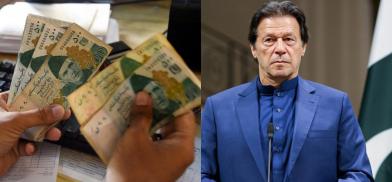Growth, jobs and IMF conditionalities: Pakistan’s daunting budgetary challenges
As there are 110 million youth in the country, there is a need for generating two million jobs every year to absorb them, the finance minister said, adding that “if we do not go into growth mode, we will have a major crisis on the streets”, writes N. Chandra Mohan for South Asia Monitor

Like the rest of South Asia, Pakistan’s growth prospects remain uncertain coping with Covid 19. All eyes are on how the fourth budget of the Imran Khan-led Pakistan Tehreek-e-Insaf (PTI) government addresses these issues on June 11. The federal budget for 2021-22 will also be delivered by the fourth finance minister, Shaukat Tarin, since the ruling regime assumed office three years ago.
Besides boosting growth, the budget will also be expected to implement the politically difficult conditionalities of the USD 6 billion loan program of the International Monetary Fund. Tarin, a former banker, has been brought in for his experience as finance minister between October 8, 2008, and February 22, 2010, during which he helped Pakistan avoid default by securing a bailout from the IMF.
IMF loan conditionalities
Implementing IMF loan conditionalities is not easy for elected governments. Although the Fund has changed its earlier stance of prescribing one-size-fits-all conditions, it remains a bank at the end of the day that wants its loans serviced. Naturally, it advocates, among other measures, balancing the federal budget through swingeing cuts in expenditures and higher taxes when the need is to spend more to support growth.
Pakistan media reports have indicated that a freeze on salaries and pensions, higher power tariffs have also been insisted upon by the Fund. Fiscal belt-tightening ensures lower fiscal deficits so that public debt levels remain sustainable. However, despite efforts to lower spending, Pakistan's fiscal deficit remains at elevated levels.
Not surprisingly, the requirements for greater fiscal austerity are controversial. Asad Umar, the first FM of the Imran Khan-led government, resigned in April 2019 over criticism about his handling of the bailout deal with the IMF. Tarin, for his part, seeks more wiggle room in negotiations with the Fund as Pakistan has limited capacity to raise taxes or tariffs due to the exigencies of dealing with the viral pandemic.
To push for higher growth, expenditures are bound to outpace the increase in revenues, leading to slippage from the Fund’s targets. Tarin needs more fiscal space for maneuver to remain current on the IMF loan program. He has also indicated that the aim is for this to be the last bailout in the country’s history.
Negative growth
Pakistan’s budgetary challenges are daunting indeed. For the first time since the 1950s, the economy registered negative growth of 0.47 percent in 2019-20 fiscal, which began on July 1, 2019, and ended on June 30, 2020. Somewhat optimistically, the government has pegged growth at 3.94 percent in 2020-21, which is more than double what the IMF (1.5 percent) expects and thrice of what the World Bank (1.3 percent) has projected! It believes that the revival in growth is gathering momentum and is balanced across the major sectors.
However, during the last three years, growth averaged a lowly 1.85 percent that is less than the population growth of 2.2 percent. This indicates an economy deep in crisis with adverse consequences for living standards.
Battling Covid 19 through lockdowns has worsened distributional outcomes. The government has pegged job losses in the economy at a whopping 14 million. Half of the working population experienced either job or income losses; with low-skilled workers employed in elementary occupations and in the informal sector bearing the full brunt of the contraction in employment in the economy. Poverty is expected to increase for the first time in two decades.
Debt burden
In this milieu, public finances are stressed as tax revenues have plunged while expenditures are much higher to support health programs and social safety nets for the poor. Higher borrowings are imperative to finance these burgeoning expenses domestically and from abroad. The upshot is a massive and growing burden of public debt amounting to 87.9 percent of the nation’s output of goods and services or GDP at the end of December 2020.
Debt servicing leaves less for other developmental priorities. In 2019-20, for instance, PKR 2.7 trillion of debt servicing preempted a massive 87 percent of net federal tax collections, according to Sushant Sareen’s insightful analysis of Pakistan’s budget of 2020-21 for the Observer Research Foundation.
The budget’s bet thus is on faster growth to get the finances under control. To support growth, the new finance minister has indicated a step up in development expenditures of PKR 900 billion (USD 6 billion). Tarin told Bloomberg that Pakistan’s economy needs to expand by five percent in 2021-22 as “that’s the bare minimum we need for a country this size”. This would ensure greater federal tax revenues amounting to PKR 6 trillion in 2021-22.
“Unless we get more revenues, forget about any incentives to boost the economy”, stated Tarin. As there are 110 million youth in the country, there is a need for generating two million jobs every year to absorb them, Tarin said, adding that “if we do not go into growth mode, we will have a major crisis on the streets”.
(The writer is an economics and business commentator based in New Delhi. His views are personal. He may be contacted at nchandramohan@rediffmail.com)










Post a Comment